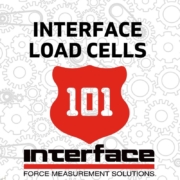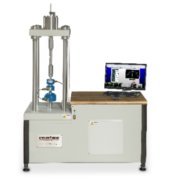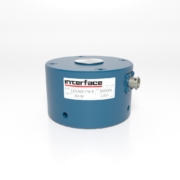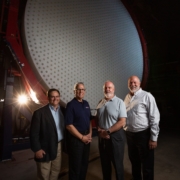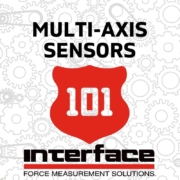Interface Sensors Optimize Food Canning and Production
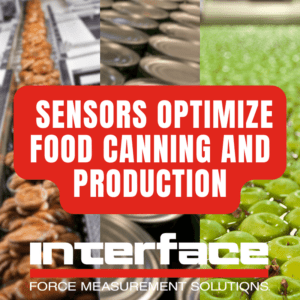 In the food packaging and production industry, consistency and quality are key. Due to this, many food production and packaging facilities are utilizing automation more than ever. The automation process includes monitoring actions and tasks using force measurement sensors. These sensors collect critical data to maximize food production and packaging efficiency.
In the food packaging and production industry, consistency and quality are key. Due to this, many food production and packaging facilities are utilizing automation more than ever. The automation process includes monitoring actions and tasks using force measurement sensors. These sensors collect critical data to maximize food production and packaging efficiency.
Interface provides force measurement sensors and systems for equipment, devices, and machines that produce and package consumable products across various use cases. From harvesting and sorting to processing and packing, force measurements improve quality control, efficiency, and safety in food production and packaging. For example, production line engineers use sensors to detect and reject defective products, monitor equipment performance, and identify potential hazards.
The versatility of Interface sensor technologies provides the ability to innovate and solve challenges related to condition, consistency, and productivity for canning and food production. Whether using a small LBM Compression Load Button Load Cell within a production line machine or deploying multi-axis sensors during production to gather feedback in real-time, Interface has a diverse range of transducer and instrumentation options.
How Interface Products Improve Canning and Food Production
- Monitoring the pressure applied to a mixer to ensure consistent product quality.
- Regulating the force applied to a canning line to prevent cans from being damaged.
- Detecting unknown items in food products.
- Measuring the force in picking fruit or vegetables without damaging them.
- Capping with precision to prevent crushing the bottles.
- Sorting by the size, weight, and firmness of produce ensures it meets quality standards.
- Controlling the force applied to food during cutting, slicing, grinding, and other processing steps.
- Ensuring food is packaged correctly and safely, with the correct pressure and cushioning.
- Weighing food products precisely to ensure accurate packaging.
- Monitoring the force applied to a robotic arm to ensure safe and efficient handling of food products.
Using Interface load cells, food production and packaging companies can gather instant force measurements from their production line. For instance, when a canned goods company is filling its packaging with any food, a load cell can be used to measure the weight of the food in the can and automatically notify the filling machine when it is complete. This will tell the device to move on to the next can. All this can be done without any human intervention.
Alternatively, force sensors can be used to monitor the health of the production line. Force sensors are often installed in industrial machines to collect data on the operations of devices. This data can be analyzed and used to help predict when a machine might need maintenance or a conveyor belt can be outfitted with force sensors to help keep everything aligned. This contributes to greater food packaging and production quality and less downtime for the production line.
Interface force measurement solutions are used in all aspects of food production, including agriculture equipment, weighing scales, industrial automation robotics, and lifting machines used to transport consumer goods. Here are a few customer use cases.
Commercial Food Processing
A food processing plant wants accurate results of their in-motion check weighing equipment when food is weighted and processed down the belt. They want to ensure production line efficiency and food quality. The customer also wants real-time results of their food being weighed and a load cell that can endure the industry’s highly regulated environment. Multiple Interface scale load cells can be installed in the customer’s in-motion check weigher at the specific points where the food is weighed on the belt. The SPI High Capacity Platform Scale Load Cells deliver precise weighing results. When connected to the 920i Programmable Weight Indicator and Controller, it will give the customer real-time results of food weight, which can read up to four scale channels. Read more: WEIGHING: Commercial Food Processing.
Fruit Weighing and Packaging
A customer owns and operates a fruit packaging plant. They want to weigh the bins full of fruit loaded onto conveyor belts that transfer the fruit to other steps of the distribution process to read the hands of the consumer in grocery stores. Interface suggests installing SPI Low Capacity Platform Scale Load Cells and WTS-AM-1E Wireless Strain Bridge Transmitter Modules in the center of the platforms the fruit bins are loaded on. The WTS-AM-1E wirelessly transmits the data collected from the SPI to the WTS-BS-1-HA Wireless Handheld Display for multiple transmitters and the WTS-BS-6 Wireless Telemetry Dongle Base Station when connected to the customer’s computer. Read more: Fruit Weighing App Note.
Food and Beverage Conveyor Belt
Conveyor belts for the food and beverage industry must be maintained and adequately aligned to transport the products. A load cell is necessary to prevent misalignment and to reduce the risk of damage or malfunction of the belt while in operation. PBLC Pillow Block Load Bearing Load Cells can be installed onto the conveyor belt. They are designed for easy maintenance and will measure and monitor the force of the conveyor belt while preventing misalignment. Using the PBLC Pillow Block Load Cells, Interface’s customer successfully maintained the proper alignment of the conveyor belt for the food and beverages being transported while also monitoring the forces being implemented. Read more: Food and Beverage Conveyor Belt.
Snack Weighing and Packaging Machine
A snack manufacturing brand wanted to weigh the amount of their snacks automatically dispersed into the bags during packaging. In this case, they want to weigh their potato chips being packaged. The company also wanted to ensure the potato chips were at the exact weight needed to meet regulatory standards to be distributed to consumers in the public. Interface’s solution was to use multiple SPI Platform Scale Load Cells and install them to the potato multi-head weigher and packaging machine. The SPI Platform Scale Load cells were installed inside the mount that attaches the head weigher to the packaging machine. Force results from the potato chips were read by the load cells and sent to the ISG-isolated, where the customer could control the automated production from their command center. Using this solution, the customer could determine the weight of the potato chips being distributed into their bags with highly accurate results. They also were able to control the automated production process with the provided instrumentation. They will use this same weighing method for other snacks that need to be packaged.
As many industries turn to automation to improve productivity and quality while reducing waste, force sensors will play an increasingly critical role in providing accurate and immediate data to optimize equipment and machines. In the food service industry, we are already seeing a significant impact on the quality of production processes using force measurement.
ADDITIONAL RESOURCES
Interface Manufacturing and Production Solutions
Force Measurement for Efficiency in Food Processing and Packaging
Load Cells for Smarter and More Efficient Weighing
Watch how sensors are used in industrial robotics for packaging.
Vertical Farming for Sustainable Food Production on Earth and Beyond
Interface Helps to Move Agriculture Innovation Forward
